General election 2019: The jobs eight out of 10 Britons do
- Published
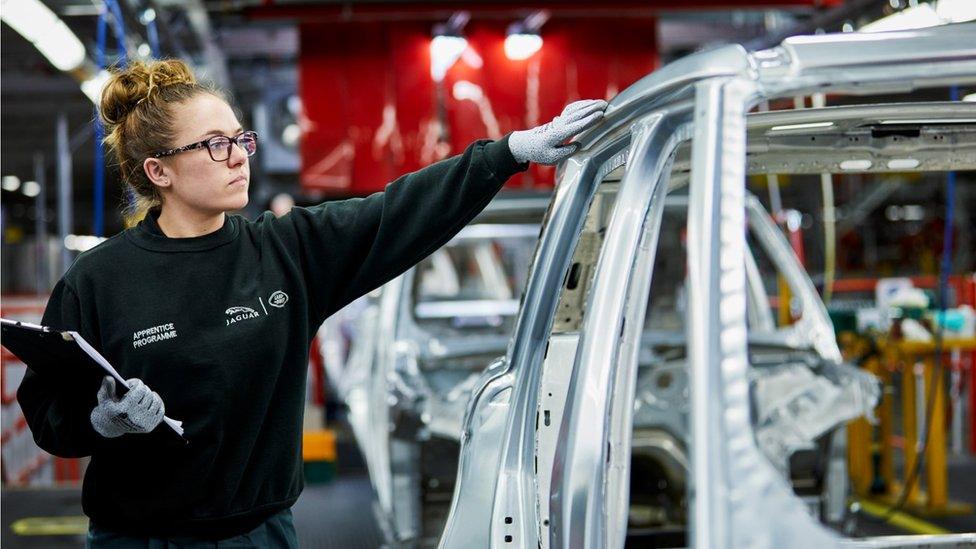
The UK is gearing up for another election, which means politicians of all parties fighting for the votes of what they call "ordinary" or "hard-working" people.
There are record numbers of people in work in the UK, although concerns have been raised about the quality of their employment and pay levels.
So, what jobs do we do in Britain, and what might be on workers' minds?
A nation of service industry workers
When politicians want to appeal to working people, they tend to don hard hats and head to factories or construction sites.
These workplaces may look good in pictures, but they do not chime with most people's experience of work.
Fewer than one in 10 people work in manufacturing, and even fewer in construction.
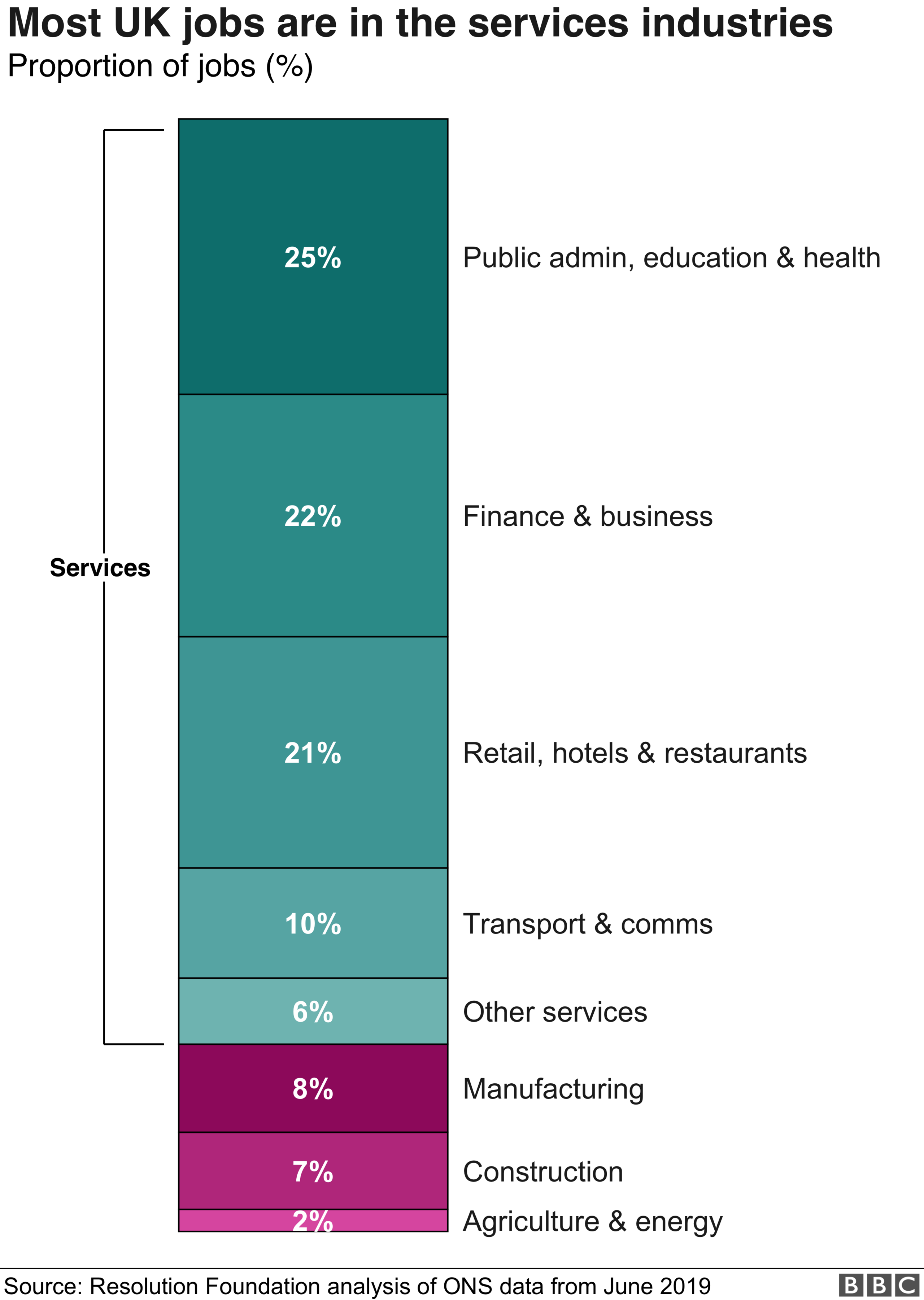

In contrast, more than eight out of 10 people work in service industries.
This covers everything from bank workers to plumbers and restaurant staff - the businesses that provide work for customers, but which don't manufacture things.
These service sector jobs have grown over time: 25 years ago they made up three-quarters of employment.
Many of these jobs have been in public administration, education and health.
Not all service sector jobs are growing though.
The recent woes of the retail sector have been well documented, but its share of the overall workforce has been shrinking since 2003.
Workers are older and more likely to be female
The world of work may once have been a man's world, but that is no longer the case.
At the start of the 1970s, a little over one-third of workers were women.
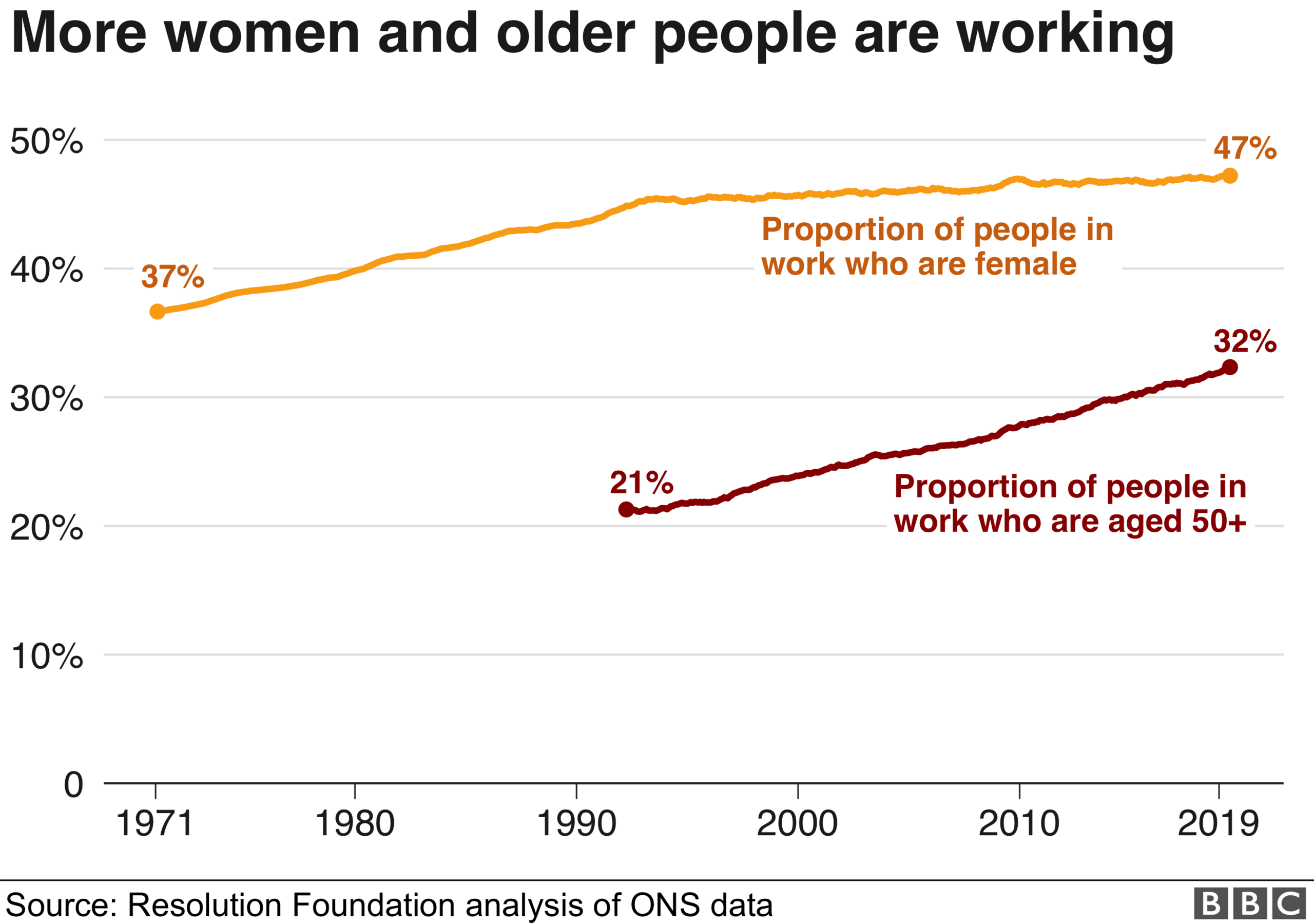
But rapid growth in female employment during the 1970s and 1980s means that women now make up almost half of the workforce.
However, there are still big challenges in terms of how men and women experience work, like the enduring gender pay gap - which is about 17% for all employees and 9% among full-time staff.
Nonetheless, rising female employment has been one of the key drivers of improvements in living standards over the past 50 years.
More recently, the workforce has also grown older.
Nearly one in three people in work is now aged 50 and over, compared to just over one in five back in 1992.
This trend is being driven by rising life expectancy, the progress of the large baby boomer generation through their careers and policy changes like the increasing state pension age.
A work life less ordinary
The changing nature of work - and the jobs people do to make ends meet - has become an increasingly important issue.
Over the last decade, we've heard a lot about the rise of zero-hours contracts, and the emerging gig economy.
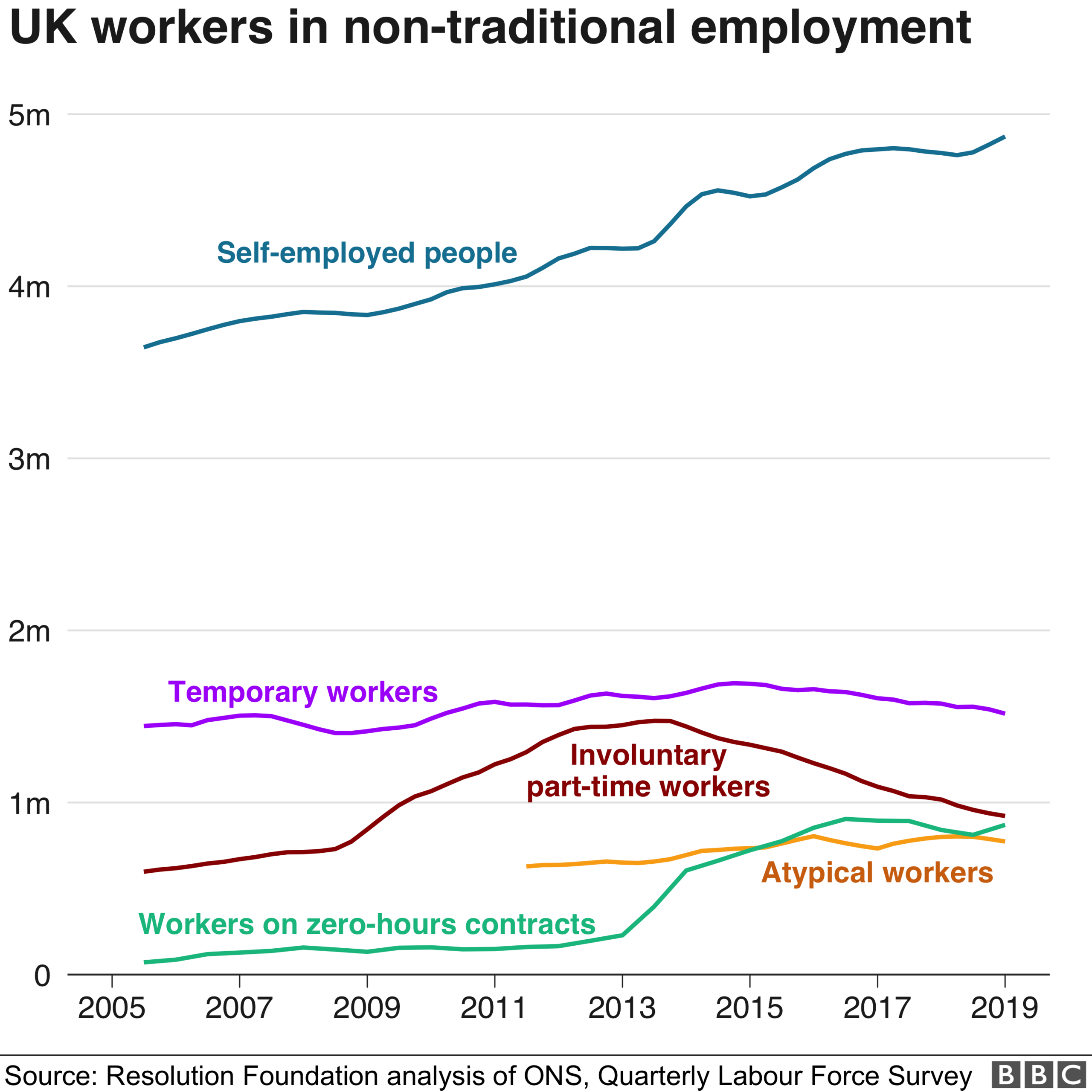

The term is often used to describe short-term casual work, although there is some disagreement about exactly what it means and the number of jobs it includes.
However, what is clear is that ways of working that might be thought of as less traditional have increased.
In the UK, there are nearly five million self-employed people, from highly-paid management consultants to delivery drivers - an increase of more than 50% since the turn of the millennium.
In addition, there are 870,000 workers on zero-hours contracts, 770,000 agency workers and 1.5 million temporary workers.
These forms of employment grew markedly in the mid-2010s. But their share of the labour market has fallen slightly since then, as Britain's employment rate has risen.
It may be that firms have had to improve work conditions - for example by offering permanent, fixed-hours contracts - as they find it harder to recruit.
But these falls have been small, suggesting this type of working isn't going anywhere.
A traditional full-time job is still the norm
Although the world of work is evolving, it is still the case that most people have what might be called traditional jobs.
Nearly two-thirds of people in work have full-time roles for an employer - a proportion that has fallen only slightly since the early 1990s.

But what constitutes a day's work has changed over time. For the past 150 years, we have consistently chosen to work less, as average hourly pay has risen.
The average working week is now 32 hours long, down from 56 a century ago.
But, since the 2007-8 financial crisis, our working week has stopped shrinking, possibly because wage stagnation has meant that workers are keen to make extra cash.
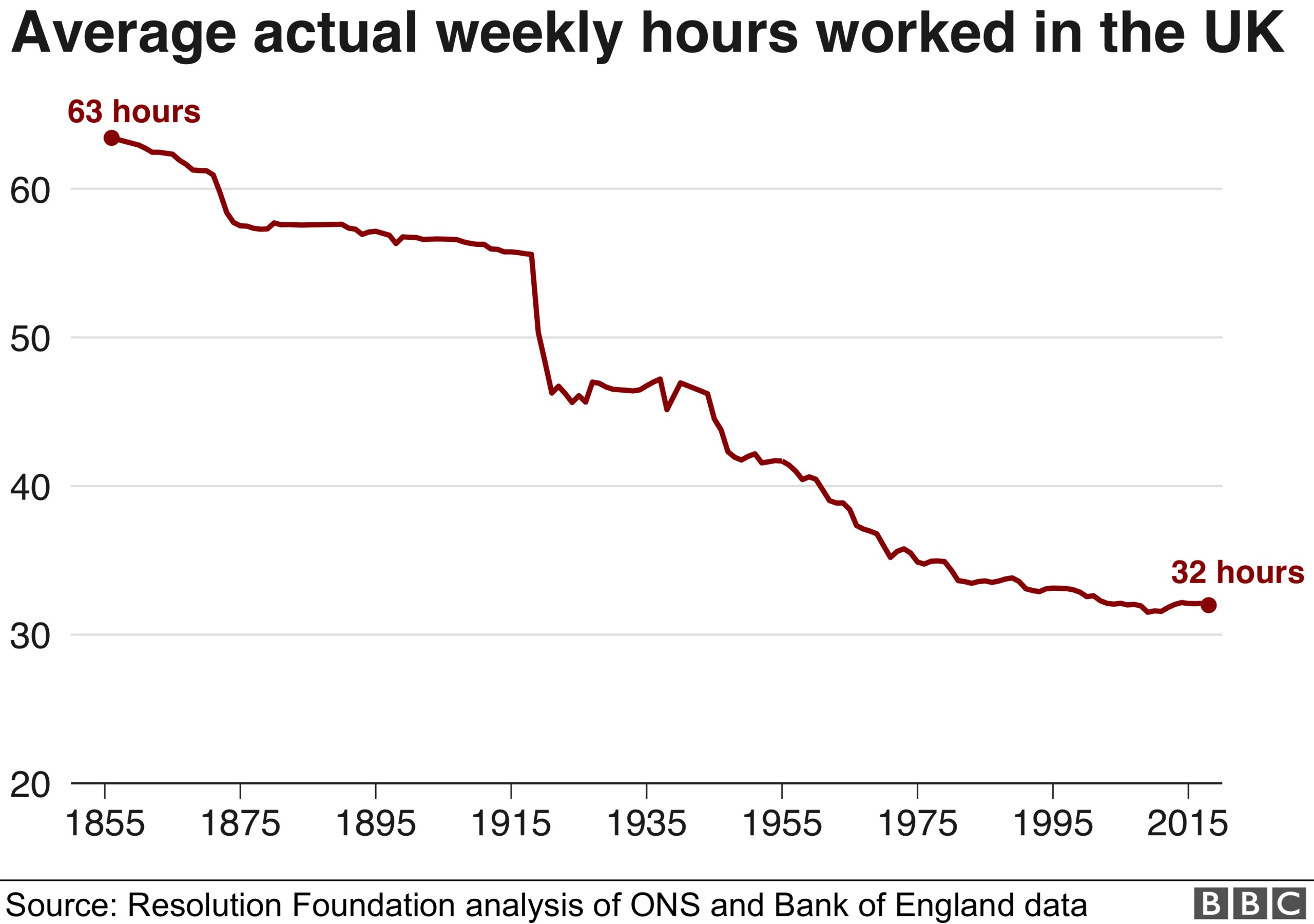
The minimum wage has helped low earners
For most people, living standards are determined by whether they have a job - and how much they get paid.
For the lowest-paid workers, the introduction of the National Minimum Wage in 1999 set a minimum hourly rate for the first time.
It has since risen faster than both inflation and average earnings. As a result, hourly pay for the lowest earners has risen nearly twice as fast as average pay over the past 20 years.
The National Living Wage - the higher wage floor for workers aged 25 and over - has taken the minimum wage to new heights.
Pay is improving - but not for everyone
Britain has experienced an unprecedented pay squeeze over the past decade. But in 2019 the picture has been more positive, with real pay growth approaching its pre-crisis average of about 2% a year.
Average pay looks set to finally surpass its August 2007 peak, external later this year.

Some groups are still in the middle of a pay downturn. They include thirty-somethings, many of whom entered the labour market at the height of the financial crisis, along with public sector workers and those in the south-east.
The possible return to "peak pay" is an important living standards milestone. But had pay consistently grown at 2% per year, rather than getting stuck in a 12-year downturn, then the average weekly salary today would be £138 higher.

About this piece
This analysis piece was commissioned by the BBC from an expert working for an outside organisation.
Laura Gardiner, external is research director at the Resolution Foundation, specialising in the labour market.
The Resolution Foundation, external describes itself as a think tank that works to improve the living standards of those on low to middle incomes.
